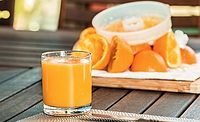For today’s US consumers, ancient grains are more popular than ever as these foods continue to play a role in growing food trends such as whole grains, gluten-free, non-GMO and bio-diversity, natural, organic, high fiber, high protein and vegan diets.
According to a recent study by market researcher Packaged Facts, 19 percent of American adults have purchased menu or grocery items featuring ancient grains in the last 30 days. This percentage was the same for sprouted grains and ingredients.
Quinoa dominates menus and new product announcements, but researchers say wheat, oats and corn and less familiar ancient grains are increasingly likely to be featured in ancient grain formulations.
In terms of packaged foods, ancient grains have become more widely available at mainstream and natural food retailers, appearing in multiple locations within these stores, and are now found in a growing number of food and beverage products and categories. Some of the grains themselves and flours made from them are being marketed alongside standard flour, corn meal and other specialty flours in the baking aisle. They can also be found in the rice aisle packaged and sold for use as side dishes and recipe use.
Based on Packaged Facts review of packaged food products and categories that feature ancient grains positioning or market products containing ancient grain ingredients, the reasons for incorporating them are many and fit with:
-faster growing breakfast and snacking opportunities,
-being a good source of plant protein,
-giving the impression of cleaner, shorter, simpler ingredient labels,
-and perhaps most importantly, supporting whole grain and gluten-free claims.
While many of the more recent ancient grain product launches continue to be in categories traditionally associated with grain ingredients (e.g. cereal, bread, bars and baking mixes), others include salty snacks, entrée salads, side dishes, boxed dinner mixes, frozen meat alternatives and yogurt, notes David Sprinkle, research director, Packaged Facts.
For more information on the study click here.




